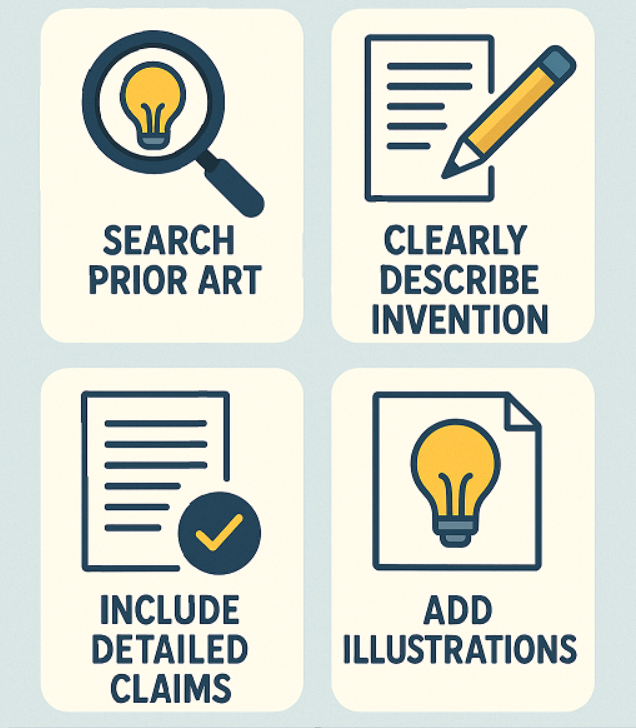The Core Principle: One Figure at a Time
The core principle is to fully describe each figure before moving to the next. Think of it as giving each drawing its own dedicated moment in the spotlight. A proven structure for every figure is:
— Introduce: Briefly state what the figure illustrates.
— Describe: Detail every element and interaction shown.
— Conclude: Summarize and note it’s just one embodiment.
— Repeat: Move to the next figure and follow the same pattern.
The figure-by-figure structure is a strategic tool for efficiency. Examiners manage heavy workloads; a logical flow allows them to rapidly comprehend your invention’s core concepts, pinpoint its novelty, and correlate the text with the drawings. This clarity minimizes confusion and facilitates a more precise examination report, ultimately advancing your application more smoothly.
Adapting the Method for Common Scenarios
While the «one figure at a time» rule is straightforward, these two common scenarios benefit from a tailored approach.
Scenario 1: A Sequential Series (e.g., Figures 1A-1C)
When figures show a step-by-step process, treat them as a single narrative unit.
Example: Figures 1A-1C show a user onboarding flow for a financial app.
Best Practice: Use one introduction and conclusion for the entire series.
«Figures 1A-1C depict an exemplary user onboarding process. In Figure 1A, the user enters their contact information. The system then validates the email, as shown in Figure 1B. Finally, Figure 1C shows the user setting up a security PIN. The sequence in Figures 1A-1C represents one possible embodiment.»*
Scenario 2: The Overview and the Detail (e.g., Figure 1 and Figure 2)
It’s common to have a high-level system diagram (Figure 1) followed by a detailed close-up of a key component (Figure 2).
Example: Figure 1 shows an e-commerce recommendation engine; Figure 2 details its filtering algorithm.
Best Practice: When you reach the component in Figure 1, briefly reference the later detail, but finish describing Figure 1 first like in the following:
*»As shown in Figure 1, the recommendation engine 115 analyzes user history to suggest products (see Figure 2). The engine 115 then sends these suggestions to the user interface 120…»
*[After completing Figure 1] «Turning to Figure 2, the recommendation engine 115 includes a collaborative filter 205 and a content-based filter 210…»*
This technique keeps the reader firmly grounded in the «big picture» before you expertly zoom in on the specifics.
The Bottom Line
A disorganized application forces examiners to reconstruct your logic, increasing the risk of misunderstanding. A structured, figure-by-figure flow guides them effortlessly through your invention, demonstrating clarity and making their job easier—a strategic advantage that can lead to a smoother examination process.
Think of your patent application as a guided tour of your invention. Your role is to lead the reader on a seamless journey from one exhibit to the next, without confusing detours or backtracking. Master this organizational principle, and your patent applications will stand out for all the right reasons.
Need help drafting a clear, examiner-friendly patent application? Feel free to reach out with questions or for professional assistance in protecting your innovations.


